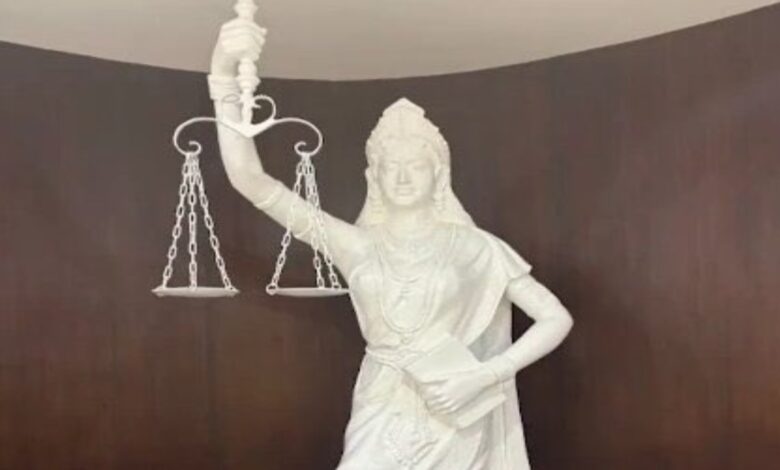New Statue of Lady Justice Unveiled in India’s Supreme Court, Symbolizing Modern Legal Ideals
Chief Justice D.Y. Chandrachud Leads Effort to Replace Colonial Symbols, Emphasizing Fairness Over Punishment

On Wednesday, a new statue of ‘Lady Justice’ was installed in India’s Supreme Court, featuring significant changes from its traditional design. The blindfold, previously covering the statue’s eyes, has been removed. Additionally, the sword in one hand has been replaced with the Constitution, sending a message that the law in India is neither blind nor purely a symbol of punishment. These changes were made under the direction of Chief Justice of India (CJI) D.Y. Chandrachud.
The new statue is located in the Judges’ Library of the Supreme Court. Traditionally, the blindfold on Lady Justice symbolized the equality of all before the law, indicating that courts do not judge cases based on wealth, power, caste, religion, gender, or social standing. The sword represented the power to punish injustice.
However, the new statue has open eyes, and instead of the sword, it now holds the Constitution in one hand and scales in the other. This change reflects a shift in emphasis towards justice based on fairness and balance rather than retribution.
Symbolism of the New Statue
According to Supreme Court sources, the scales have been placed in the statue’s right hand to represent balance in society, emphasizing the idea that courts weigh the facts and arguments of both sides before reaching a verdict. This move is also seen as an effort to shed colonial legacy, in line with recent changes in India’s legal system.
Moving Beyond Colonial Traditions
This change comes as part of a broader push to move away from British-era practices. Recently, colonial-era laws like the Indian Penal Code (IPC) were replaced with the Bharatiya Nyaya Sanhita (BNS). Additionally, the Bharatiya Nagarik Suraksha Sanhita (BNSS) and Bharatiya Sakshya Adhiniyam (BSA) were implemented on July 1, 2024. These new laws aim to modernize India’s judicial system and free it from colonial influences, while enhancing fairness and efficiency in delivering justice.





